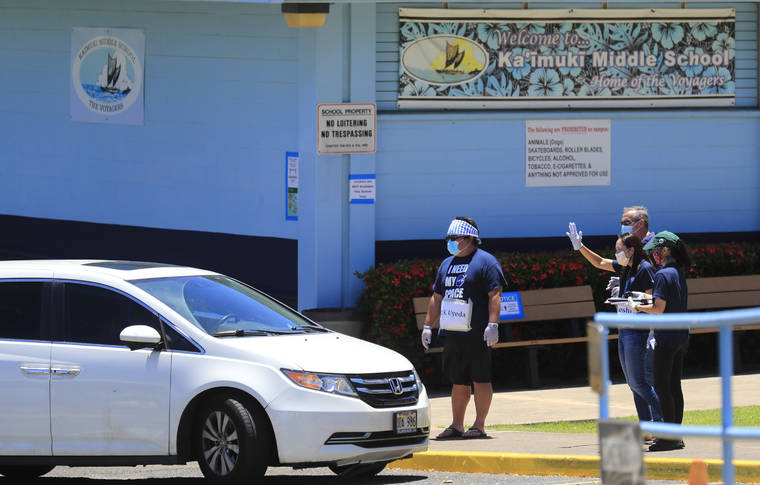Shortly after the state Department of Education (DOE) and the Hawaii State Teachers Association (HSTA) signed off on a back-to-school agreement this summer, disagreement erupted over how and when to reopen campuses amid the COVID-19 public health threat.
Given the growing evidence that there’s no one-size-fits-all remedy for keeping learning alive, the DOE has stressed flexibility in its framework of protections, with guidance from the state Health Department. The teachers union, meanwhile, has repeated clamored for more across-the-board requirements for the statewide system’s schools.
The first flashpoint ignited in early July when HSTA questioned the distancing in classrooms; a compromise calls for any exception to less-than-6-feet configurations to be approved by a DOE-HSTA panel. In a second round of compromise, the state rightly agreed to push back the start date for the 2020-21 year, from Aug. 4, giving teachers more time to train for distance and blended “learning models,” and address on-campus safety concerns.
Schools are slated to open Monday, with some campuses offering “grab-and-go” pickups for computers and back-to-school forms. Others have students scheduled to be in classrooms with teachers for part of the day, or are offering one-on-one appointments.
But in the latest clash, which flared Thursday — amid more than one-dozen consecutive days of new COVID-19 cases here climbing into triple digits — the union demanded that schools be off limits to students for the first quarter, with on-campus activity this week limited to a grab-and-go pickup of tech equipment and materials.
Further, HSTA has filed a complaint asking the Hawaii Labor Relations Board to stop the state from requiring public school teachers to report to campus this week, saying it would be hazardous to their health. This disappointing 11th-hour action seemed disproportionate to expected on-campus risks. Also out of proportion is union’s take that the current reopening plan is “reckless.”
In the absence of a proven COVID-19 vaccine or treatment, no school is a puncture-proof bubble. However, as in every other sphere of public life, vigilant mitigation — by way of physical distancing, mask-wearing, stepped-up sanitation and hand-washing routines — is laying a working foundation for at least tentative reopenings in social, economic and education settings, among others.
The DOE-HSTA back-to-school plan folds in these and other protective measures in its aim to set the table for learning in the new normal.
This fresh-start strategy for the education of nearly 180,000 students — who have not been on campus since the mid-March abrupt halt to classroom instruction — stands a better shot at success if kids are afforded opportunity for brief in-person orientation, which will help them reconnect with school communities.
Without that, students struggling with online lessons or logistics may feel untethered and less inclined to reach out for help, which is worrisome given that students have already lost dozens of in-person instructional days. Student-focused safeguards must be in place to prevent any further delay in recouping learning losses.
After four weeks of systemwide distance learning — recently imposed due to surging infections — the DOE intends to assess whether students can safely move to a plan in which school principals and staff offer either in-person classes or a rotation of distance learning and in-person instruction.
Also, all schools, other than charters, have geared up to continue to offer full distance learning to families who choose it. Given the uncertainty tied to the pandemic, this sort of fluidity seems reasonable. However, any shift to on-campus instruction must be accompanied by significant DOE improvement in transparency in matters of public notification tied to COVID-19 cases.
Last week, after HSTA justifiably criticized DOE for its lack of candor, the state agency revealed to news media that seven school employees had tested positive for COVID-19 since teachers returned to work July 29. According to DOE policy, notification goes only to individuals directly affected. The Health Department, meanwhile, takes the lead on publicly reporting individual positive cases.
Chain of responsibility aside, this practice largely leaves the public in the dark, undermining confidence. Although there’s a fine balance between the public’s right to know and personal privacy, clear and consistent disclosure of basic case numbers is allowed, according to federal guidance, and essential for sound decision-making — on the part of schools, parents and related communities.
Reopening public schools is enormously challenging, made even more difficult by DOE-HSTA sparring. For the sake of students, who are long overdue to return to their studies and some semblance of class structure, educators and campus communities must work to minimize conflict and strive for flexibility and cooperation in this new-normal territory.

